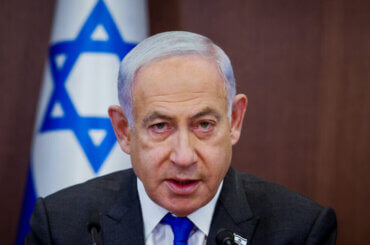Whenever I come back to Jerusalem, I notice all of the things that have changed since my last visit and inevitably compare things to the way they were when I was growing up: old buildings torn down or renovated, new ones put up, changing demography, greater sophistication alongside persistent provincialism, shifting mores and moods. I can’t say I like the changes but, as the expression goes, nostalgia ain’t what it used to be.
Jerusalem is not a big city. According to Israel’s Central Bureau of Statistics (2004), the city’s inhabitants number 706.4 thousand, “thereof Jews and others” 469.3 thousand and “thereof Jews” 458.4 thousand. The CBS document includes the following explanation regarding the category “Jews and others”: “As of 1995, the data relates to the "Jews and others" population which incl. Jews, non-Arab Christians, and those not classified by religion.” Europeans and Americans who have never been here often envision Jerusalem as a kind of throwback to Berlin, Belfast or Beirut in the bad old days. Various kinds of barriers have been erected on the outskirts of the city, separating Al-Quds from its Palestinian hinterland, but there are no checkpoints or barbed wire in the heart of the city. Nevertheless, “my” Jerusalem – with the exception of parts of the Old City – has always been a “thereof” city with a population of under half a million (under three hundred thousand, when I first arrived).
Until yesterday, I had never been to Salah ad-Din Street, East Jerusalem’s “Main Street”, or its immediate surroundings. I’d been to Wadi al-Joz once or twice (US consulate), had coffee at the American Colony, passed through Sheikh Jarrah, visited the Rockefeller Museum and the Silwan tunnel many many years ago, and attended demonstrations against Jewish settlement in Ras al-Amud, on the Mount of Olives, but I had never actually gone for a stroll or shopping on Salah ad-Din. It was on my list of things to do this trip, in the reassuring company of Palestinian friends (as I had done in Ramallah). But yesterday, I found myself on Prophets’ Street, in sight of an old mosque and mausoleum (Nabi ‘Akasha?) that had once made an impression on me, and decided to walk down toward Sultan Suleiman and cross over to the “other side,” all on my own. Decades of fear, amplified by Israeli education, government, media and society, made me a little apprehensive (should I hide the bag of Hebrew books I had just bought, prominently displaying the logo of an Israeli bookshop?), but years of interaction with all sorts of people, including Palestinians, Arabs and Muslims, reassured me that Salah ad-Din was just another street, filled with ordinary folk going about their everyday business.
On the way, already in East Jerusalem, I passed fortress-like symbols of Israeli presence – a courthouse, the Justice Ministry. Their heavily guarded entrances were hardly reassuring. Salah ad-Din itself was decorated with strings of coloured lights – in honour of Ramadan, I presumed. The street was dominated by women in long cloaks and hijab, signs were mostly in Arabic, with a generous sprinkling of English, and the odd Hebrew brand name. There was a beggar on the sidewalk, dressed in full niqab (including gloves). I immediately spotted an English bookshop cum internet cafe. It was thoroughly western (the coffee was Italian, of course), air-conditioned, and had a wonderful selection of books on I/P, including many authors and titles unavailable in Israeli bookshops. I browsed, bought some books, and got a new “Palestinian” plastic bag to put my purchases in. As I left the shop, I felt more comfortable, and started to enjoy my walk. I bought some freshly-ground Arab coffee to take back to Italy with me. The man in the grocery was speaking Hebrew on the phone, but I spoke English (also remembering a request a Palestinian friend had once made, that we speak English in his Jerusalem neighbourhood). I didn’t want to be an Israeli on Salah ad-Din.
I then started to explore the semi-deserted side streets. I saw the notorious National Insurance Institute building, where Palestinians must wait for hours and days and even pay people to hold their place in line, in order to enjoy some of the social rights to which they are entitled as residents and taxpayers, rights taken for granted on the other side of the city. I saw the headquarters of the Al-Quds Arabic daily and the modest campus of Al-Quds University. At a certain point I realised how familiar these streets I had never visited before actually were. The topography, architecture, courtyards and gardens looked just like those in the older neighbourhoods in “my” Jerusalem – Rehavia, Talbiye, Mea Shearim, the Bukharan Quarter. I don’t know what I had expected. After all, Jerusalem was once, not so long ago, a single – albeit diverse – city, neither “unified” nor “reunified.”

